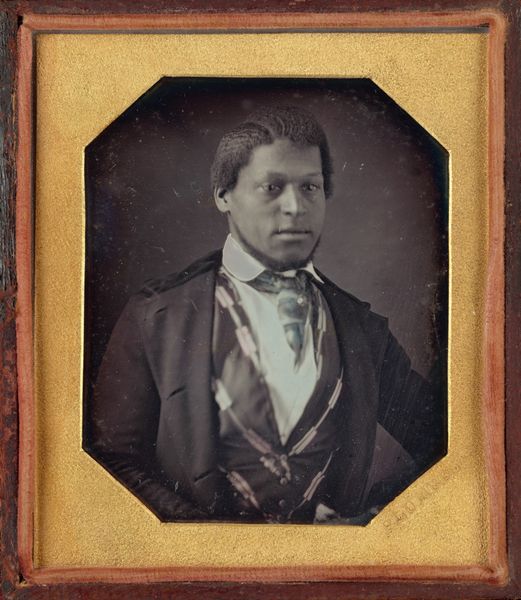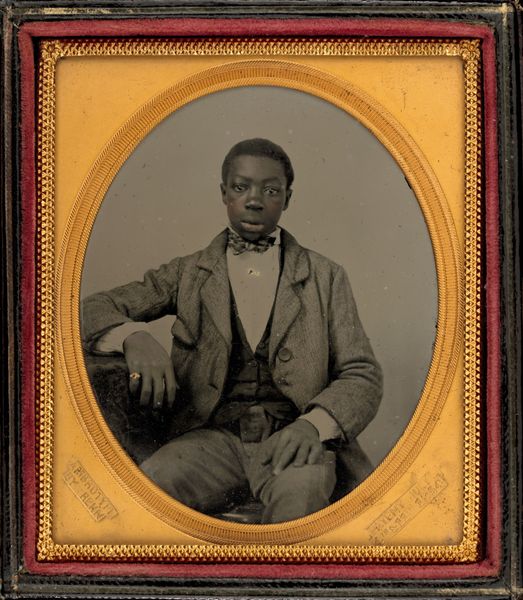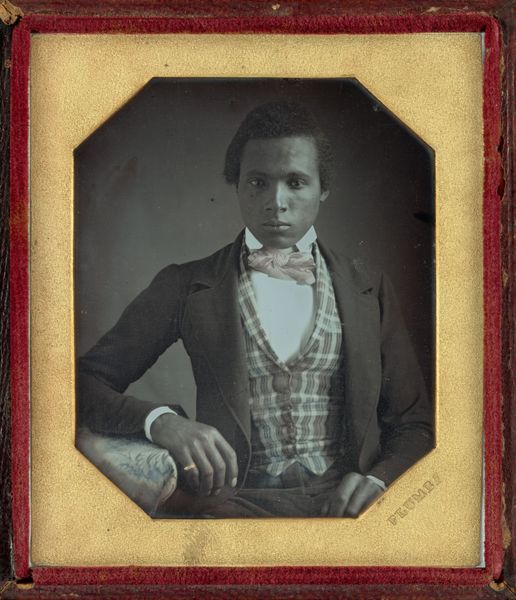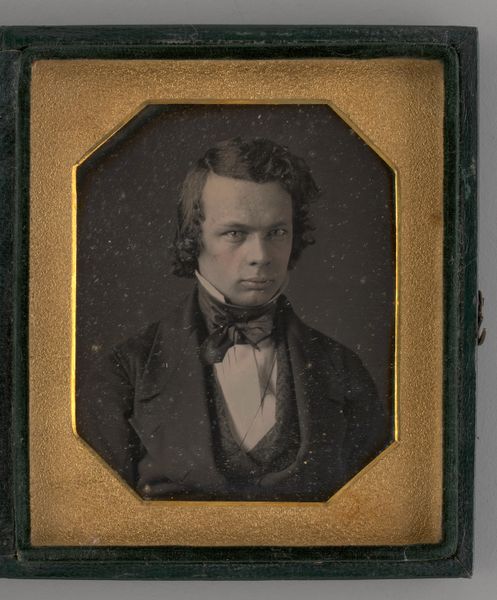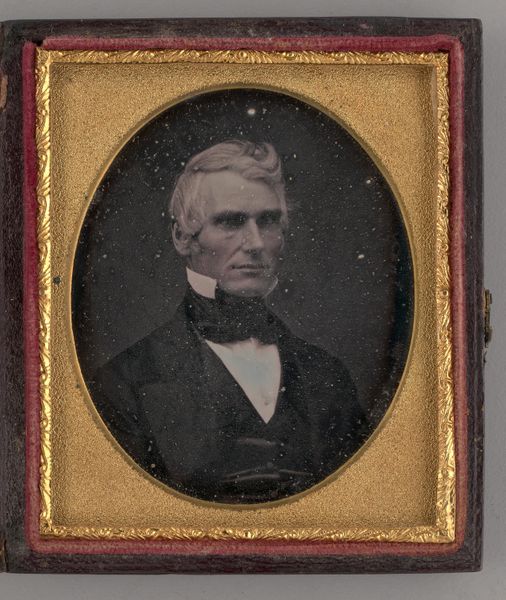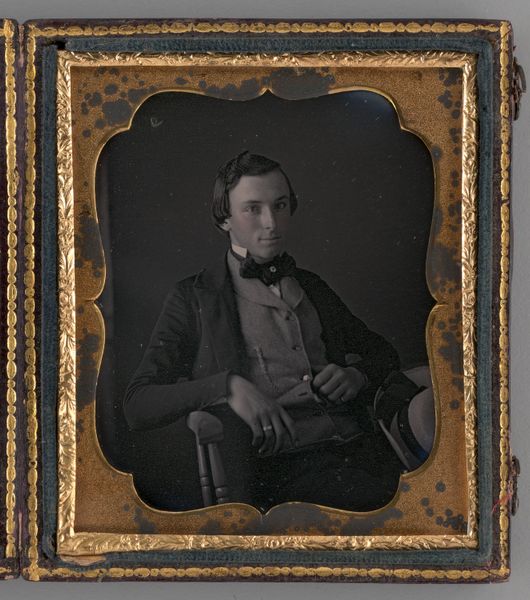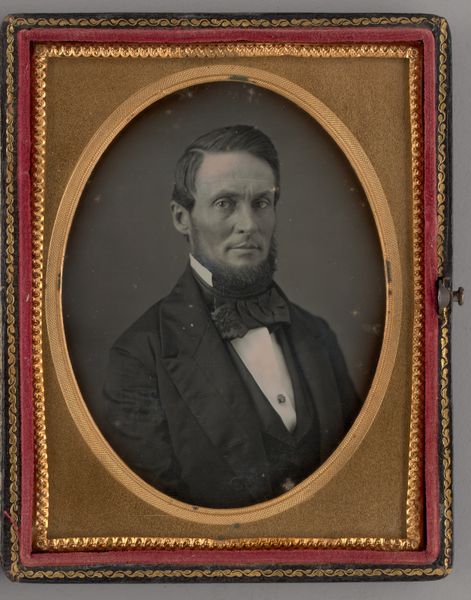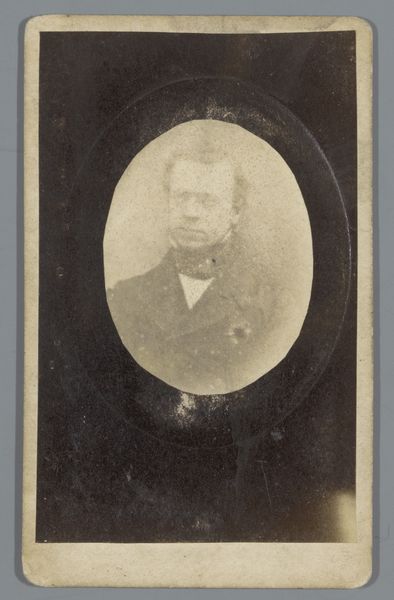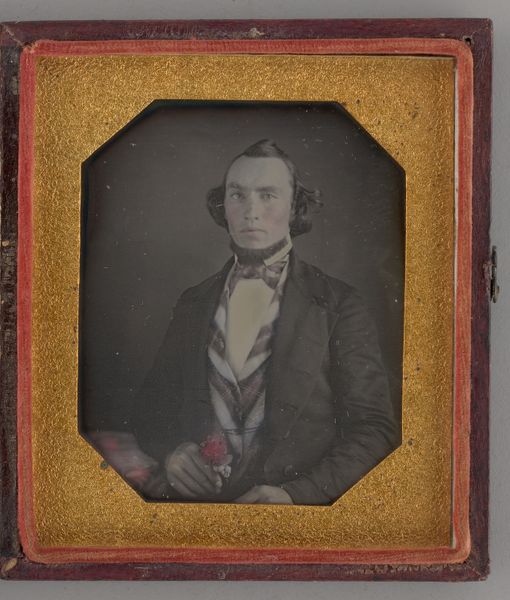
daguerreotype, photography
#
portrait
#
african-art
#
16_19th-century
#
daguerreotype
#
photography
#
romanticism
#
united-states
Dimensions: 14 × 10.6 cm (5 1/2 × 4 1/8 in., plate); 12.1 × 8.8 cm (4 3/4 × 3 1/2 in., mat opening); 15.2 × 12 × 1.4 cm (6 × 4 3/4 × 1/2 in., plate in closed case); 15.2 × 24 × 2 cm (6 × 9 1/2 × 3/4 in., plate in open case)
Copyright: Public Domain
Samuel J. Miller’s daguerreotype presents us with a portrait of Frederick Douglass, the eminent abolitionist, orator, and writer. This image offers a compelling insight into the visual politics of representation in 19th-century America. Douglass, who was the most photographed American of the 19th century, understood the power of images to challenge racist caricatures and assert the dignity and humanity of Black people. The daguerreotype, with its sharp detail and tonal range, provided a powerful tool for representing individuals with unprecedented accuracy. Here, Douglass is portrayed with a composed and confident demeanor, embodying the ideals of respectability and intellectuality that he tirelessly promoted. Through strategic use of photography, Douglass sought to dismantle prevailing stereotypes and advance the cause of racial equality. Historians can access Douglass’s writings and speeches to gain insights into his motivations and the broader context of his activism. By examining such historical sources, we gain a richer understanding of the social and institutional forces that shaped both the art and the artist's role within it.
Comments
No comments
Be the first to comment and join the conversation on the ultimate creative platform.
